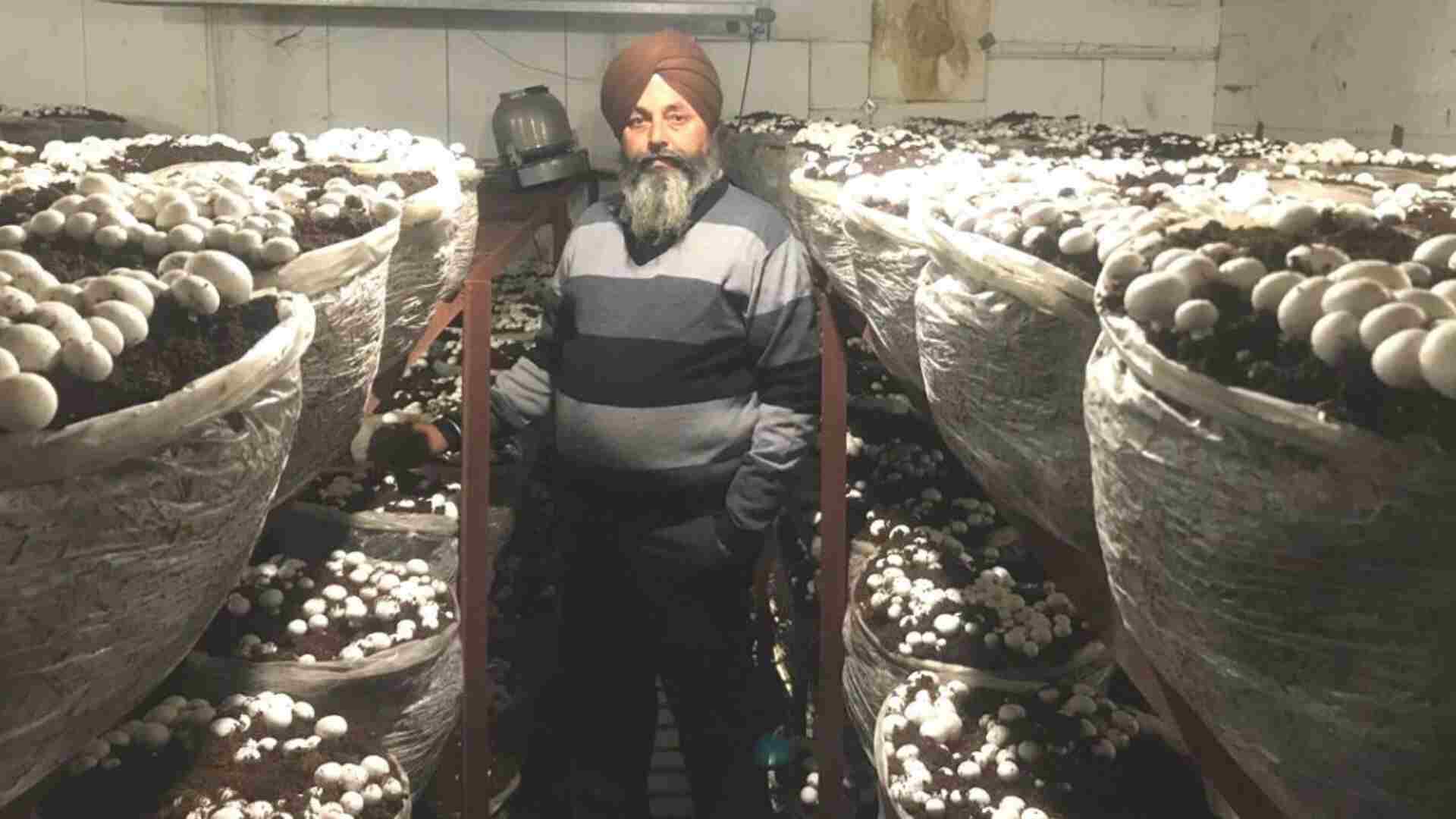
After living in Bhusal village in Haryana’s Kaithal for over 22 years, 60-year-old Baldev Singh Cheema moved to Hoshiarpur in Punjab three years ago with his wife and two children. They were searching for a better life and better income opportunities. Baldev took out a loan and bought 3.75 acres of land in the semi-hilly village of Thuana, located in the Mahilpur block of Hoshiarpur, based on advice from a relative.
Baldev faced many challenges, but he used his strengths and innovative ideas to start mushroom farming. With hard work, talent, and some government subsidies, he succeeded in growing button mushrooms, which brought him great success.
“In Bhusal, my one-acre land was near the Markanda river and often flooded. I kept suffering losses until I decided to move to a better place. I was unsure about leaving our old life behind, but now I know it was the best decision I could have made,” he says.
During the mushroom season, which runs from September to March, Baldev sells around ₹70 to ₹75 lakh worth of mushrooms. Even though he owns 3.75 acres, he only uses 1.5 acres for mushroom farming. He builds about 20 temporary huts (60×30 feet each) every September and dismantles them in April. After that, he plants Basmati 1509 rice on the same land using direct seeding Rice (DSR) technology, which he harvests in September. This dual farming method allows him to earn a good income throughout the year and ensures high yields.
Baldev creates the ideal environment for mushroom farming by setting up shelves in the 12-feet-high huts. He nurtures the mushroom spawns in bags for 35-40 days to get the first harvest. After three harvests, he replaces the old bags and starts a new seven-month cycle. Each hut produces around 40 quintals of mushrooms, and during the season, he collects between 350 and 400 kg of mushrooms daily, totaling about 800 quintals (80,000 kg) per season. He sells the mushrooms himself, with prices ranging from ₹75 to ₹120 per kg based on demand.
After April, Baldev prepares the land for Basmati 1509 rice cultivation, which begins in May and is harvested in September. His annual mushroom sales amount to ₹70 to ₹75 lakh, showing that his venture is very profitable. His operational costs, including labor, compost, seeds, packaging, and transportation, are around ₹2.75 to ₹3 lakh per hut.
Baldev employs 20 people, including several women from the local community, for 7-8 months each year. By providing them with jobs, he helps support their livelihoods and boosts the local economy.
Much of Baldev’s expertise comes from training at the Kristi Vigyan Kendra (KVK) in Hoshiarpur, where he learned how to make high-quality compost for mushrooms. He also uses a poly sheet in winter to keep the huts at the right temperature for mushroom growth. Baldev has assisted many small farmers in Punjab and Haryana in starting their own mushroom farms.
Baldev uses insulated pasteurization chambers for making compost, which costs about ₹20 lakh to set up. This method, which takes 10-12 days, produces high-quality compost that improves mushroom yields and reduces the risk of diseases. He uses a mix of wheat straw, poultry litter, wheat bran, urea, and gypsum to make the compost.
In his huts, he prepares compost, fills bags with it, and places the bags on shelves for mushroom growing. He covers the bags with paper and uses a suitable soil mixture to retain moisture and support the growth of mushrooms.
Baldev’s story shows that small and marginal farmers can achieve great success through innovation. Maninder Singh Bons, associate director at KVK Bahowal, Hoshiarpur, says that Baldev has outperformed many large-scale farmers by using creative ideas and training from KVK.
According to Ajaib Singh, assistant professor at KVK Bahowal, Baldev’s success demonstrates that with some risk and innovation, even small-scale farmers can achieve big results.
Experts at KVK told Baldev that mushrooms are an excellent food source to combat malnutrition. They noted that a small investment in a 20×60 feet plot could help farmers earn ₹40,000 to ₹50,000 in 3-4 months. In contrast to China, which has the highest per capita mushroom consumption at 14 kg per year, India’s consumption is much lower at just 20-25 grams per person per year.
Baldev Singh Cheema’s move from Haryana to Punjab led him to discover success in mushroom farming. Through hard work, innovation, and government support, he has built a successful business and supports his local community. His story highlights the potential for small farmers to achieve great things with the right approach and resources.















